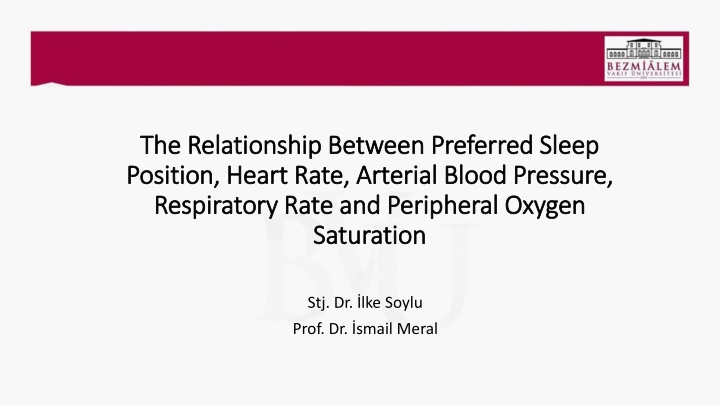
Ten Tips and Tricks to Master DAA by Anthony S. Unger, MD
Discover valuable insights from Anthony S. Unger, MD on mastering the Direct Anterior Approach (DAA) in orthopedic surgery. Learn the importance of attending cadaver courses, arranging proctor visits, utilizing imaging effectively, and more. Gain expert advice on case selection, time management, and instrument familiarity to enhance your surgical skills. Embrace the bonus tip on the supine position's influence on cup position for improved outcomes. Take your orthopedic surgery proficiency to the next level with these practical recommendations.
Download Presentation

Please find below an Image/Link to download the presentation.
The content on the website is provided AS IS for your information and personal use only. It may not be sold, licensed, or shared on other websites without obtaining consent from the author. If you encounter any issues during the download, it is possible that the publisher has removed the file from their server.
You are allowed to download the files provided on this website for personal or commercial use, subject to the condition that they are used lawfully. All files are the property of their respective owners.
The content on the website is provided AS IS for your information and personal use only. It may not be sold, licensed, or shared on other websites without obtaining consent from the author.
E N D
Presentation Transcript
The Relationship Between Preferred Sleep The Relationship Between Preferred Sleep Position, Heart Rate, Arterial Blood Pressure, Position, Heart Rate, Arterial Blood Pressure, Respiratory Rate and Peripheral Oxygen Respiratory Rate and Peripheral Oxygen Saturation Saturation Stj. Dr. lke Soylu Prof. Dr. smail Meral
Aim Aimof of the the Study Study Sleep is the unconscious phase that a person can be awakened by stimulus. Sleeping position is crucial for falling asleep and maintaining a quality sleep. Studies have been conducted to determine preferences for sleeping positions for specific groups of people, and certain positions were preferred more often. However, such a study was not conducted in the young adult group, which will be our subject of research.
Aim Aimof of the the Study Study The aim of this study is to investigate the relationship between the preferred sleep position and parameters such as heart rhythm, arterial blood pressure, respiratory rate and peripheral oxygen saturation in students aged 18-23. Our research hypothesis: Do individuals unconsciously determine their sleep position according to the parameters of heart rhythm, arterial blood pressure, respiratory rate and peripheral oxygen saturation?
Method Method In order to find a statistically significant and meaningful results, it was calculated that at least 30 participants should be observed. The study included 30 female and 30 male students. A consent form was read and signed by each of the participants to provide information about the study and to obtain their consent that they participated voluntarily. Participants' required informations were recorded with a questionnaire containing seven questions, and a guide containing visuals of the sleeping positions was also given during the survey in order to understand the questionnaire correctly.
Method Method The students participating in the study were placed, in supine, prone, starfish, right lateral decubitus, left lateral decubitus and fetal sleeping position in the Measurements were made at the end of a 5-minute adaptation period following each sleeping position. 18-23 y.o. BMI value between 20-25 Use of a max. 1 pack (20 pieces) of cigarettes per day Absence of a chronic or acute illness Inclusion Criteria same order. Exclusion Criteria BMI value < 20 or > 25 Use of more than 1 pack of cigarettes per day Having any chronic or acute illness Heart rate and arterial blood pressure were determined with an electronic blood pressure meter, peripheral oxygen saturation with a finger-type pulse oximeter, and respiratory rate by observing. Mean and standard deviation are presented as descriptive statistics. ANOVA tests were used to compare the positions and analyzes were made with IBM SPSS 20.0 program. The significance level was accepted as 0.05. Statistical Analysis
Results Results It was found that the pulse and respiratory rate were not related to the position (p>0.05). It was found that systolic arterial pressure (p=0.01), diastolic arterial pressure (p=0.02), and oxygen saturation (p=0.007) were significantly affected by position. The highest oxygen saturation was found in the prone position and the lowest in the supine position. The highest systolic arterial pressure was in the supine position and the lowest was in the right lateral decubitus position. The highest diastolic arterial pressure was in the supine position and the lowest was in the right lateral decubitus position.
Results Results Ranking Preferences Fetus Supine Prone Right LD Left LD Starfish 1st 10 9 8 11 12 10 2nd 6 14 6 11 13 10 3rd 10 9 10 13 7 11 4th 12 7 12 7 15 7 5th 10 9 13 10 8 10 6th 12 12 11 8 5 12 Preference frequency of sleeping positions
Results Results As a result of the measurements made for 60 participants, the following table was created by taking the average of the values found for the 5 vital values in each sleep position. Average Values Heart Rate Supine Prone Right LD Left LD Starfish Systolic 113,23 112,18 104,98 105,75 110,45 Diastolic 71,87 71,35 65,85 65,67 69,98 O2 Saturation 97,87 98,32 98,28 97,98 98,07 Respiratory Rate 18,42 18,58 18,57 18,48 17,97 82,05 82,33 80,63 80,73 82,78
Results Results The graphs of the averages table created in the previous step, together with the standard error bars of the measurements, were created. While making a comparison between sleep positions at this step, no acceptable difference was found in the values of pulse, O2 saturation and respiratory rate, but an acceptable difference was found in the values of systolic and diastolic blood pressure.
Conclusion Conclusion As a result of the tests performed, it was found that the distribution of systolic, diastolic arterial pressure, and oxygen saturation were affected from positions. Therefore, the distribution of pulse and respiratory rate values was found to be the same across all positions.
References References 1. Guyton ve Hall T bbi Fizyoloji. Elsevier. 2013. 12.bas m. Beyin Etkinlik Durumlar -Uyku, Beyin Dalgalar , Epilepsi, Psikozlar. John E. Hall, PhD, Arthur C. Guyton et al. 2. Better Sleep Council | Start every day with a good night s sleep. (2019). Sleep Positions. [online] Available at: https://bettersleep.org/better-sleep/sleep-positions/ [Accessed 6 Dec. 2019]. 3. Galland BC, Taylor BJ, Bolton DPG. Prone versus supine sleep position: a review of the physiological studies in SIDS research [Internet]. Journal of paediatrics and child health. U.S. National Library of Medicine; 2002 [cited 2019Dec6]. Available from: https://www.ncbi.nlm.nih.gov/pubmed/12173990 4. Shepherd KL, Yiallourou SR, Odoi A, Yeomans E, Willis S, Horne RSC, et al. When does prone sleeping improve cardiorespiratory status in preterm infants in the NICU? [Internet]. Sleep. U.S. National Library of Medicine; 2019 [cited 2019Dec6]. Available from: https://www.ncbi.nlm.nih.gov/pubmed/31691829 5. Galland BC, Reeves G, Taylor BJ, Bolton DP. Sleep position, autonomic function, and arousal [Internet]. Archives of disease in childhood. Fetal and neonatal edition. BMJ Group; 1998 [cited 2019Dec6]. Available from: https://www.ncbi.nlm.nih.gov/pubmed/9713030 6. Leung RST, Bowman ME, Parker JD, Newton GE, Bradley TD. Avoidance of the left lateral decubitus position during sleep in patients with heart failure: relationship to cardiac size and function [Internet]. Journal of the American College of Cardiology. U.S. National Library of Medicine; 2003 [cited 2019Dec6]. Available from: https://www.ncbi.nlm.nih.gov/pubmed/12535814 7. van Maanen JP, Meester KAW, Dun LN, Koutsourelakis I, Witte BI, Laman DM, et al. The sleep position trainer: a new treatment for positional obstructive sleep apnoea [Internet]. Sleep & breathing = Schlaf & Atmung. U.S. National Library of Medicine; 2013 [cited 2019Dec6]. Available from: https://www.ncbi.nlm.nih.gov/pubmed/22927107 8. Cartwright, D. R, Diaz, Stephen, Lloyd. Effects of Sleep Posture and Sleep Stage on Apnea Frequency [Internet]. OUP Academic. Oxford University Press; 1991 [cited 2019Dec6]. Available from: https://academic.oup.com/sleep/article/ 14/4/351/2742835
Thank Thank you you for for listening listening Q&A






















